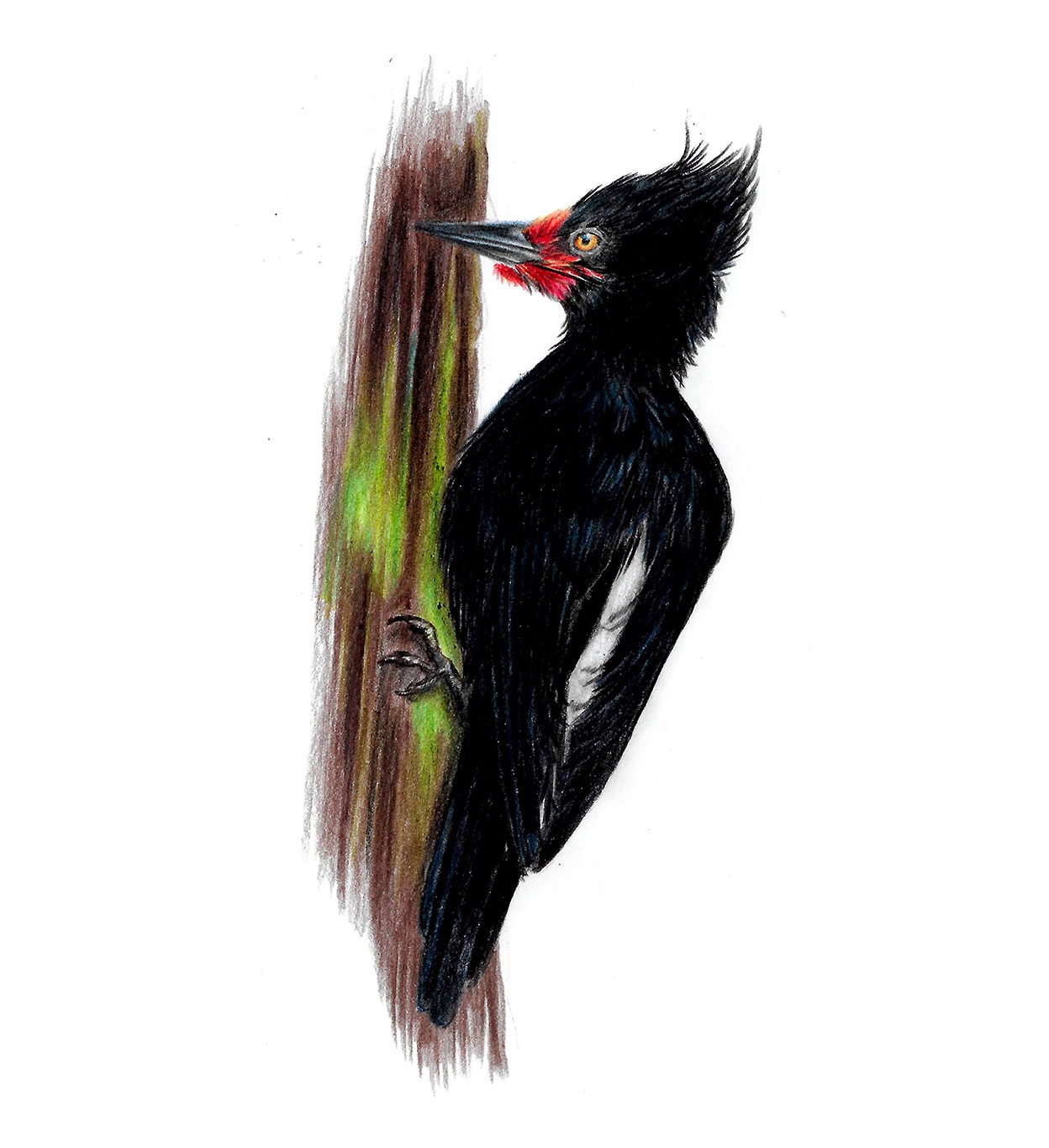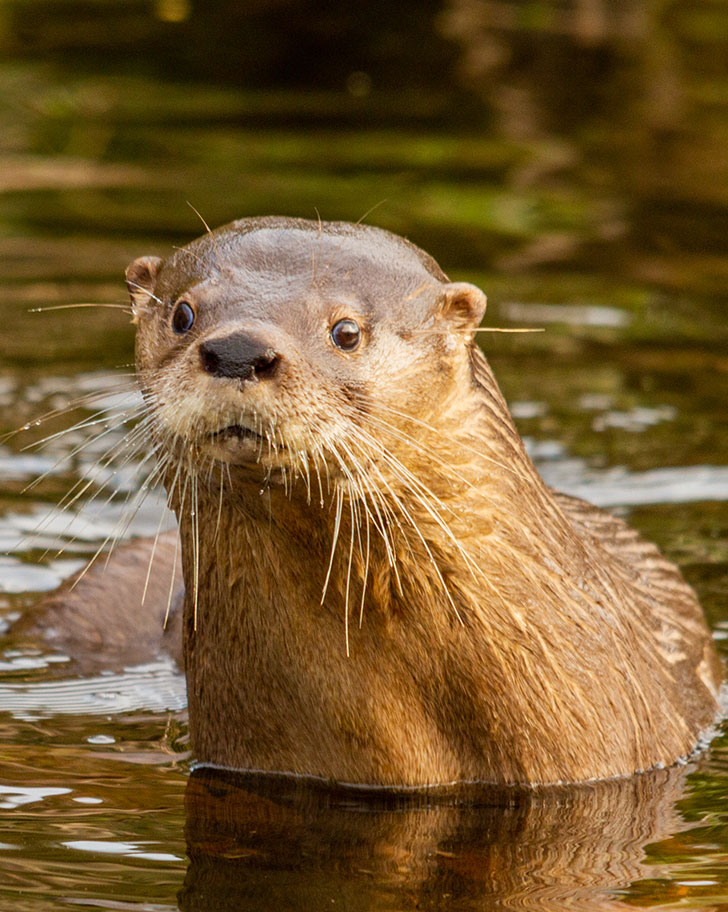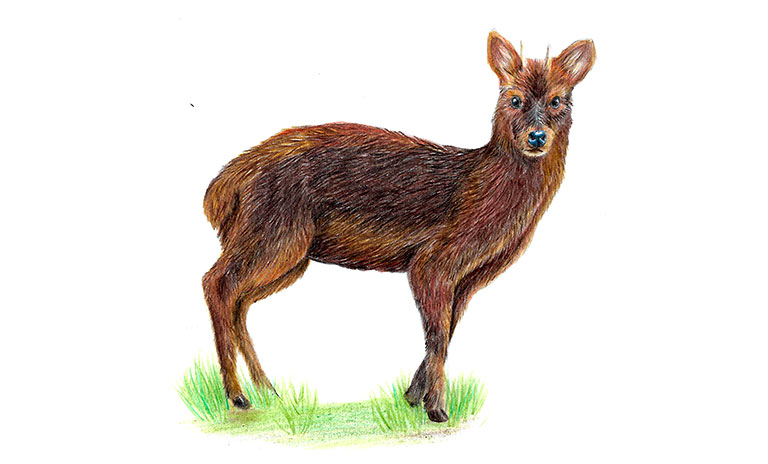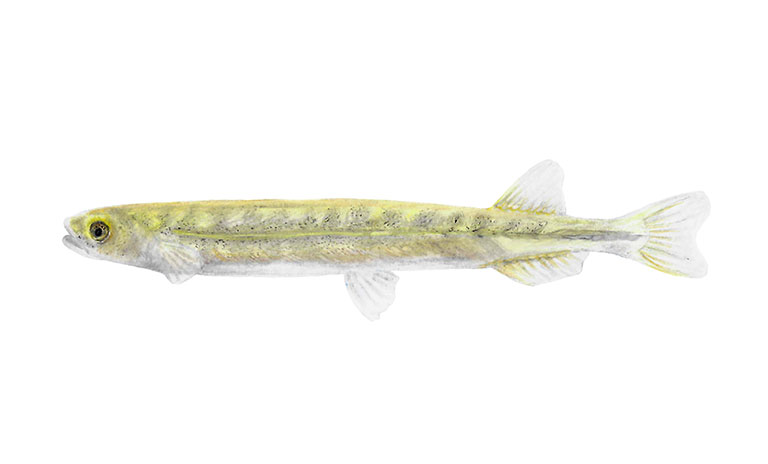Fauna
The Meullín-Puye Nature Sanctuary is home to 40% of the total numbers of species found in the Aysén Region: 11 species of amphibians, 77 birds, and 21 mammals.
Some of the most representative species in the area are the Magellanic woodpecker (Campephilus magellanicus), South American snipe (Gallinago magellanica), peregrine falcon (Falco peregrinus), pudú (Pudu puda), southern river otter (Lontra provocax), puye grande (Galaxias platei), and Darwin’s frog (Rhinoderma darwinii).
There are about 28 species of birds and mammals classified in some conservation category.
This area is characterized by being highly isolated due to low levels of anthropic intervention, especially in the basin of the Yulton and Meullín lakes, and geological events. These conditions have made it possible to observe structures and ecological processes in this non-altered area. There are no traces of domestic animals in the Cuervo and Marta river basins, or any introduced wild species with the exception of the mink.
"The Meullín-Puye Nature Sanctuary is home to 40% of the total numbers of individual species found in the Aysén Region: 11 species of amphibians, 77 birds, and 21 mammals".
The Meullín-Puye Nature Sanctuary is home to 40% of the total numbers of species found in the Aysén Region: 11 species of amphibians, 77 birds, and 21 mammals.
Some of the most representative species in the area are the Magellanic woodpecker (Campephilus magellanicus), South American snipe (Gallinago magellanica), peregrine falcon (Falco peregrinus), pudú (Pudu puda), southern river otter (Lontra provocax), puye grande (Galaxias platei), and Darwin’s frog (Rhinoderma darwinii).
There are about 28 species of birds and mammals classified in some conservation category.
This area is characterized by being highly isolated due to low levels of anthropic intervention, especially in the basin of the Yulton and Meullín lakes, and geological events. These conditions have made it possible to observe structures and ecological processes in this non-altered area. There are no traces of domestic animals in the Cuervo and Marta river basins, or any introduced wild species with the exception of the mink.
Amphibians
Eleven species of amphibians have been found in the area. These include the Patagonian toad (Bufo variegatus), which belongs to the Bufonidae family; nine species of amphibians from the Leptodactilydae family; and the endangered Darwin’s frog (Rhinoderma darwinii), which is a member of the Rhinodermatidae family. Other species include the Chiloe Island ground frog (Eupsophus calcaratus), considered vulnerable, and the emerald forest frog (Hylorina sylvatica).
Amphibians
Eleven species of amphibians have been found in the area. These include the Patagonian toad (Bufo variegatus), which belongs to the Bufonidae family; nine species of amphibians from the Leptodactilydae family; and the endangered Darwin’s frog (Rhinoderma darwinii), which is a member of the Rhinodermatidae family. Other species include the Chiloe Island ground frog (Eupsophus calcaratus), considered vulnerable, and the emerald forest frog (Hylorina sylvatica).
“Eleven species of amphibians have been found in the area."
Mammals
A total of 21 mammal species have been recorded in the area, seven of which are carnivores, along with three herbivorous even-toed ungulates, one herbivorous odd-toed ungulate, nine species of rodents, and one lagomorph.
These species represent 12% of the mammalian diversity in the country and 42% of the mammals that live in the Aysén Region. The most diverse family is the Cricetidae, which are small rodents. Seven of the species found are classified in some category of conservation.
Endangered species include the pudú (Pudu pudu) and the southern river otter (Lontra provocax). The latter can be found around the Meullín and Yulton lakes. All of the riverbanks where traces of the southern river otter have been found are characterized by developed forest extending to the edge of the river and the presence of abundant vegetation, trunks, and shelters.
The most abundant species of micromammals include the olive grass mouse (Arbothrix olivaceus) and the long-haired akodont (Abrothrix longipilis). There are also recorded sightings of the Chilean climbing mouse (Irenomys tarsalis).
Mammals
A total of 21 mammal species have been recorded in the area, seven of which are carnivores, along with three herbivorous even-toed ungulates, one herbivorous odd-toed ungulate, nine species of rodents, and one lagomorph.
These species represent 12% of the mammalian diversity in the country and 42% of the mammals that live in the Aysén Region. The most diverse family is the Cricetidae, which are small rodents. Seven of the species found are classified in some category of conservation.
Endangered species include the pudú (Pudu pudu) and the southern river otter (Lontra provocax). The latter can be found around the Meullín and Yulton lakes. All of the riverbanks where traces of the southern river otter have been found are characterized by developed forest extending to the edge of the river and the presence of abundant vegetation, trunks, and shelters.
The most abundant species of micromammals include the olive grass mouse (Arbothrix olivaceus) and the long-haired akodont (Abrothrix longipilis). There are also recorded sightings of the Chilean climbing mouse (Irenomys tarsalis).
"...represent 12% of the mammalian diversity in the country and 42% of the mammals that live in the Aysén Region".
Fish
The following native species of fish have been identified in the sanctuary: the Patagonian blennie (Eleginops maclovinus) and puye grande (Galaxias platei), which are both in categories of conservation.
Other freshwater fish species have also been found in the area, such as the puye (Galaxia maculatus), peladilla (Aplochiton zebra), farionela (Aplochiton marinus), and, also, another type of peladilla (Aplochiton taeniatus), all of which are classed as being in categories of conservation.
Benthic Invertebrates
Benthic invertebrates have been identified in the area, with aquatic insects accounting for 88.5% of these species. The most abundant classes are Chrinomidae and Oligochaeta.
Zooplankton and Ichthyoplankton
Twenty-four different zooplankton taxa have been found in the sanctuary, as well as nauplius larvae. The largest and most diverse groups are the copepods and insects, with seven and six taxa found, respectively.
Benthic Invertebrates
Benthic invertebrates have been identified in the area, with aquatic insects accounting for 88.5% of these species. The most abundant classes are Chrinomidae and Oligochaeta.
Zooplankton and Ichthyoplankton
Twenty-four different zooplankton taxa have been found in the sanctuary, as well as nauplius larvae. The largest and most diverse groups are the copepods and insects, with seven and six taxa found, respectively.




























